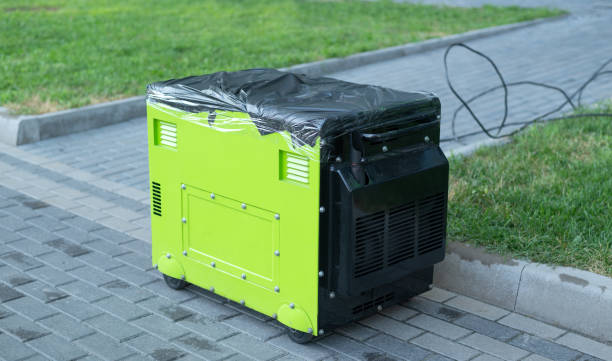
Wh capacity: how to choose your energy station (2025 guide)
Share
Wh capacity: how to choose your energy station (2025 guide)
Before purchasing a power station , correctly sizing the capacity (Wh) and power (W) is essential. This guide shows you a simple method to estimate the actual autonomy , understand the efficiency (AC/DC losses), the peak power of the inverter, and choose a model adapted to your uses (camping, vanlife, home, construction site, emergency).
Step-by-step sizing method
- List your devices (W): laptop, screen, box, TV, fridge, CPAP, tools, LED lighting.
- Estimate the duration of use (hours/day) for each.
- Calculate the daily energy: Wh = W × h for each appliance.
- Add up all Wh and add 20–30% margin.
- Apply a realistic efficiency : often ~ 0.85 (conversion, inverter, heat).
Autonomy (hours) ≈ (Station capacity (Wh) × 0.85) ÷ Average power consumed (W).
Table of uses: 200 Wh → 3000 Wh+
| Ability | Profile | Examples |
|---|---|---|
| 200–300 Wh | Day trip | Smartphones, drones, LEDs, small PCs |
| 500–700 Wh | Weekend / light van | USB-C PD laptop, projector, one-time mini fridge |
| 900–1200 Wh | Vanlife / short breaks | TV, box, table-top fridge |
| 1500–2000 Wh | Rescued house | Standard fridge, tools, short microwave |
| 3000 Wh+ | Heavy duty use | Simultaneous multi-device power usage |
Numerical examples
Nomadic teleworking setup (~120 W)
- Laptop 60 W × 4 h = 240 Wh
- Screen 30 W × 3 h = 90 Wh
- Box 15 W × 4 h = 60 Wh
- LED 15 W × 3 h = 45 Wh
Total ≈ 435 Wh/day → +25% margin ≈ 544 Wh → station 500–700 Wh .
TV evening + mini fridge
TV 100 W × 3 h = 300 Wh. Mini fridge 60–80 W with start-up peaks. Aim for 900–1200 Wh .
CPAP night (8 hours)
30–60 W depending on setting → 240–480 Wh. Recommended: 500–1000 Wh .
Yield & factor 0.85
DC→AC conversion, inverter, and heat all cause losses. Multiplying the capacity by ~0.85 gives a conservative estimate of the range. At low power over USB‑C (DC→DC), losses are often lower.
Purchasing Checklist
- Calculated capacity (Wh) + 20–30% margin.
- Sufficient continuous inverter power (W).
- Ridge suitable for starting (fridge/tools).
- Useful outputs: AC 230 V, USB‑C PD , cigarette lighter.
- MPPT solar input compatible (W & voltage).
- Chemistry LiFePO₄ if intensive use.
FAQ
Wh vs W: difference?
Wh = energy (autonomy). W = instantaneous power consumed or delivered.
How many Wh for 4–6 hours of teleworking?
Typically 500–700 Wh is sufficient, depending on the display and peripherals.
Ready to choose? Browse our energy stations . Free shipping, 30-day returns, 2-year LymobileShop warranty.
Real-life case studies: detailed autonomy calculations
Case A - Intensive teleworking over one day
Profile : 65W USB-C laptop (6h), 40W 27” screen (5h), 15W box (8h), 10W LED lighting (5h), 10W smartphone charging (2h). Average power ~ 95-120W depending on peaks.
- Laptop: 65×6 = 390 Wh
- Screen: 40×5 = 200 Wh
- Box: 15×8 = 120 Wh
- LED: 10×5 = 50 Wh
- Smartphone: 10×2 = 20 Wh
Theoretical total = 780 Wh. With an overall efficiency of ~0.85 → useful requirement ≈ 918 Wh . Recommendation: 1000–1200 Wh station to keep some margin and connect a surprise peripheral (printer, camera).
Case B - Family evening with TV + mini-fridge
TV 120 W × 4 h = 480 Wh; mini-fridge 70 W (duty cycle ~40%) over 6 h ≈ 168 Wh effective; LED 15 W × 5 h = 75 Wh → total ≈ 723 Wh; with 0.85 → ~ 850 Wh . Choice: station 900–1200 Wh with sufficient peak for the compressor.
Case C - Home emergency (fridge + box + lights)
Fridge 120 W (duty 35%) over 10 h ≈ 420 Wh; box 15 W × 10 h = 150 Wh; LED 20 W × 6 h = 120 Wh → total 690 Wh; with 0.85 → ~ 812 Wh . Reco: 1000–1500 Wh depending on the target duration.
Quick Decision Tree (Step by Step)
- Do your appliances include motors/compressors (fridge, pump)? → Yes: check peak power > 2–3× nominal; No: go to step 2.
- Occasional use (<2 h/day) or prolonged use (>4 h/day)? → Prolonged: increase the capacity by one notch.
- Are you charging with solar ? → Yes: Size 200–400 W and check compatible input voltage .
- Weight/portability priority? → Choose a 500–700 Wh station well-equipped with USB-C.
Common mistakes to avoid
- Do not count the duty cycle (fridge does not consume 100% of the time).
- Forgetting the inverter peak → shutdown at startup.
- Underestimate AC losses and heat → use USB-C when possible.
- Handle/slug not optimized for SEO (think clean URLs).
Useful accessories (energy stations)
- 100/200/400W foldable solar panels with MPPT compatibility.
- MC4 cables, XT60/DC adapters with identified polarity.
- Carrying case/house to protect vents and ports.
- Certified extension cords and power strips with protection.
Sustainability & end of life
Follow battery recycling guidelines and return end-of-life equipment to approved facilities. Proper maintenance (temperature, storage ~50–60%) significantly extends the useful life.
